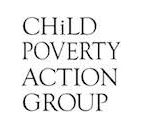
Child Poverty Action Group (CPAG) says the latest comments from Prime Minister John Key around shaping budget surpluses into better support for families is heartening.
“We are keen to see what the promised ‘tax and family package’ is, and to assess how that will help the worst-off families,” says Associate Professor Susan St John, CPAG spokesperson for economics and welfare.
Minister of Finance Bill English has recently agreed that Working for Families (WFF) is a good way for funds to reach “the families with children and families that are on low incomes”.
CPAG urges the Government to reverse the ways the current WFF drives inequality and discriminates against the children of families who do not meet the rigid hours of work criteria. In particular the significant In-Work Tax Credit worth at least $72.50 is denied to the very worst-off families.
Since April 2016 CPAG has been campaigning to remove the restrictive criteria on the In-Work Tax Credit and make it universally available to all low-income families.
CPAG says that the best thing to do to reach families in New Zealand would be to remove the off-benefit rule and work hours criteria from the In-Work Tax Credit. An extra $72.50 added to the first child Family Tax Credit would enable more families to afford the basics for their children and reduce the demands at food banks this Christmas.
The Child Poverty Monitor reports that 47% of children living in poverty have at least one working adult in the family. Part Two of the CPAG’s Fix Working for Families (FWFF) campaign highlights the way WFF is being eroded for low-income working families. These families are affected by a failure to index rates annually, and by policy that reduces the threshold and increases the rate of abatement for WFF over time.
If WFF had been properly adjusted based on inflation since its inception, the income threshold for the maximum payment would look more like $44,000. Instead it is only $36,350 and is set to fall to $35,000. WFF spending has been reducing in real terms over time, when it should be increasing, not just for inflation, but also to reflect growth in wages – just like New Zealand Superannuation.
Supporting families with adequate incomes is the fence at the top of the cliff. Government can reap the cost savings that will come later. The #FWFF Part Two Summary is available here.




